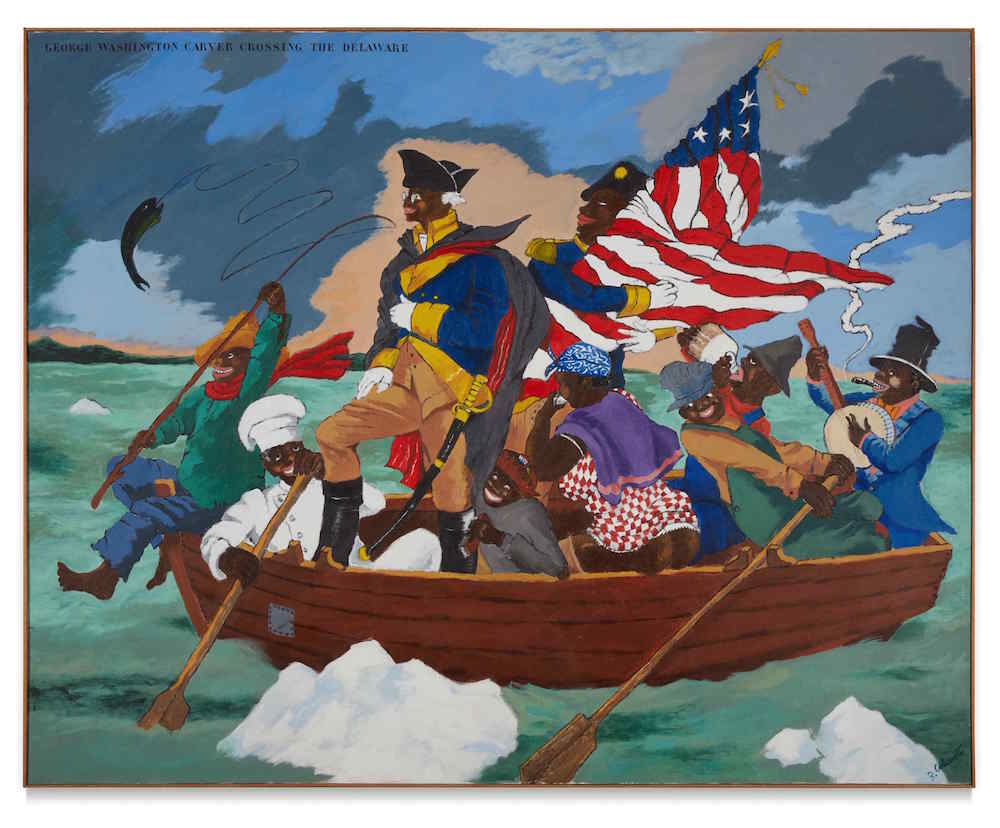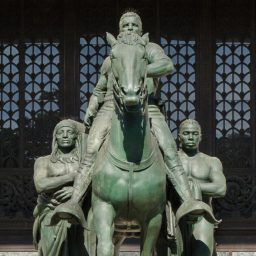Every Wednesday morning, Artnet News brings you The Gray Market. The column decodes important stories from the previous week—and offers unparalleled insight into the inner workings of the art industry in the process.
This week, crossing the border between theory and practice…
JOURNEY VS. DESTINATION
On Sunday, New York Times media columnist Ben Smith explored the progressive travel site Atlas Obscura’s self-described “decolonization project.” Its goals and limits sketch out a useful framework for art-market participants—and art-market critics—as our niche industry struggles to address similar inequities.
Atlas Obscura’s mission has always been to illuminate what typical travel guides would either ignore or elide about a slew of locations worldwide. After beginning its life as a blog focused mainly on destination-specific lists and itineraries, the publication has expanded to serve up feature-length journalism, podcasts, online courses, and (prior to last year’s shutdown) even away-from-the-keyboard experiences.
However, 11 years after its founding, Atlas Obscura is also in the midst of a reckoning. Under editorial director Samir Patel, the site is now reviewing, editing, and supplementing (in Smith’s words) “some of the 20,000 entries from a database, compiled by its community and staff, of curious places around the world in light of the last year’s shift in how Americans view their history.” Think of it as a return trip to scores of sites from a newly woke perspective.
The bookends of Smith’s one-day ridealong with Patel crystallize the flavor of the reassessment: a truth-bomb viewing of George Washington’s dentures that revealed six of the teeth were likely extracted from the poor for a fee, or from enslaved people by force; and a visit to a commemorative landmark in Inwood Hill Park bearing a plaque that distorts the nature of the deal the Dutch used to seize Manhattan from its indigenous inhabitants.
(Modern curricula have generally taught that the Native Americans outright sold the land for a grip of glass beads, but evidence suggests they thought they were only licensing the land for cooperative use.)
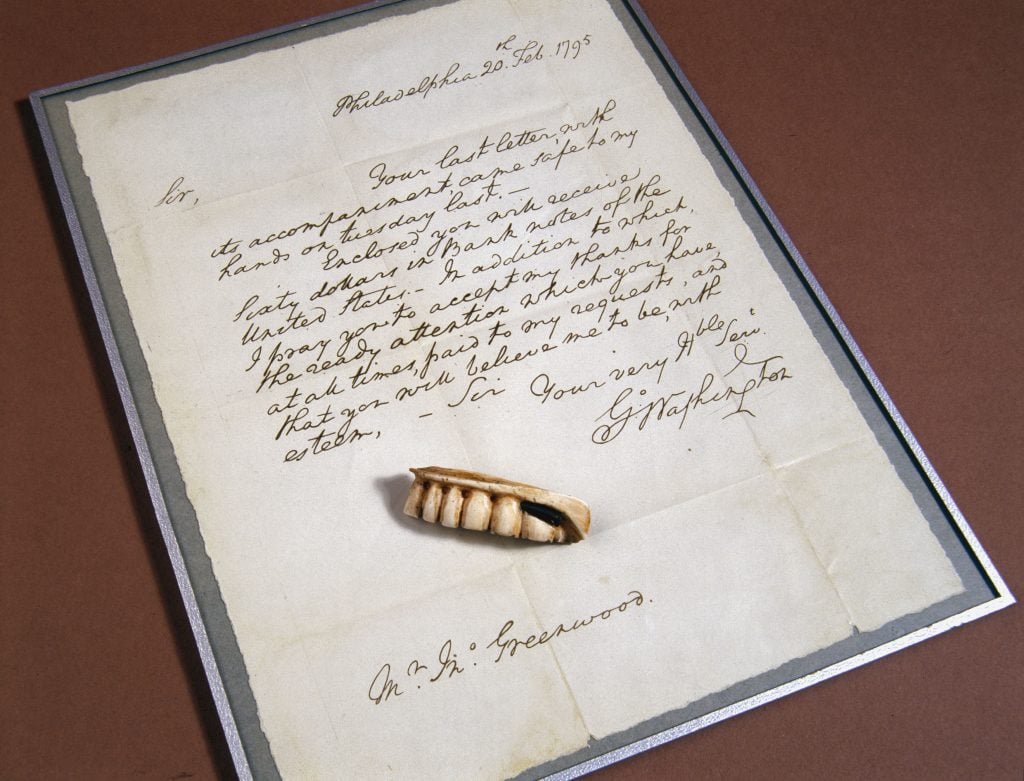
A replica set of George Washington’s dentures with a copy of a letter of thanks the first President wrote to his dentist. The real dentures have a vastly more unsettling history than you were led to believe in elementary school. Photo by SSPL/Getty Images.
Yet Atlas Obscura’s historical revisionism also raises a brambly question for progressive globetrotters. Smith quotes Rafat Ali, founder of the travel business site Skift, saying that travel writing is “always going to be outsiders looking in.” What I think he means is that there is a quasi-colonialist ethic built into the production and consumption of the form at a base level: Foreigners with money to spare drop into a far-flung location, experience the local culture as recreation, then return to their creature comforts when the costs of staying outweigh the benefits.
Is it possible, then, that the only way to fully decolonize travel writing would be to shut it down?
It turns out that Patel, one of the main forces behind Atlas Obscura’s decolonization project, actually thinks the answer might be yes. Smith relays Patel saying to him that “he’s not sure ‘decolonizing’ was the right word for the project,” with Patel adding that “decolonization suggests removal, and that’s not what we’re doing.”
Yes, the publication is channeling its coverage through a fuller, more worldly, more equitable filter. A major part of this effort involves commissioning writing from non-white residents of destinations abroad, as well as from a more inclusive array of U.S.-based talent. Patel acknowledges this approach “makes travel writing less boring,” but it doesn’t decolonize the medium.
All of which leads us to the art market.
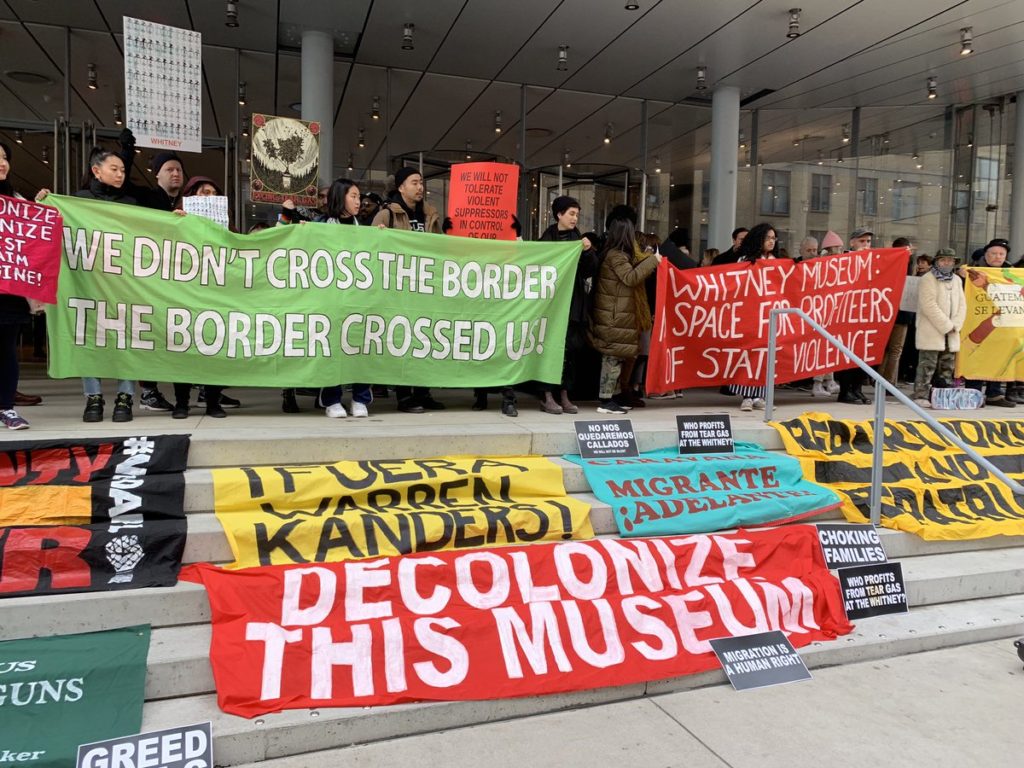
Decolonize This Place protests at the Whitney Museum of American Art. Photo courtesy of @nycDSAantiwar.
EVOLUTION VS. REVOLUTION
“Decolonization” has been a news-making rallying cry in the art world since at least the fall of 2016. That was when Artists Space hosted an exhibition by the MTL+ collective whose title, “Decolonize This Place,” now doubles as the name of the multi-organization movement at the forefront of direct actions against the Whitney, the Brooklyn Museum, the American Museum of Natural History, and other major institutions in the years since.
Although the word “decolonization” has seldom been invoked on the for-profit side of the industry, its energy has increasingly radiated into the art market. The past three years (and counting) of sales, exhibitions, and representation deals have been influenced by a rising urgency to rebalance the scales of equity. After generations in which well-off white Western men were treated as the supreme arbiters of taste on both the production and consumption side of the trade, art has at last sprouted, if not a conscience, then at least a consciousness of its biases.
Yet the results have been mixed whether viewed through the prism of race, gender, or any other identity-based trait. As of September 2018, works by Black artists comprised only about 1.2 percent of all global auction sales during the preceding decade. (The figure plummeted to just over one-quarter of one percent if you removed Jean-Michel Basquiat). Works by women fared better, but only slightly, making up roughly two percent of worldwide sales under the hammer between 2008 and mid-2019.
The proportions have undoubtedly improved in the time since, and a DEI drive (diversity, equity, and inclusion) has been evident in the gallery sector, too. Still, I’d bet the improvements have remained more evolutionary than revolutionary. Nearly 60 percent of artists signed by 70 galleries between March and November 2020 were white, according to an analysis by my colleague Kate Brown.
Second-order questions gnaw at the edges of progress, too. To cite one example, Black figurative painters have undoubtedly generated more money in sales since 2018 than during any other period in market history. But Black collectors still feel they are often being boxed out of opportunities to acquire in-demand works, reinforcing the same structural biases that have defined the Western art trade almost since its inception.
I don’t think this is an accident or a momentary quirk of history. Just as the only genuine way to decolonize travel writing would be to demolish it, it seems to me that the only genuine way to decolonize the art market would be to blow it up from the foundation.
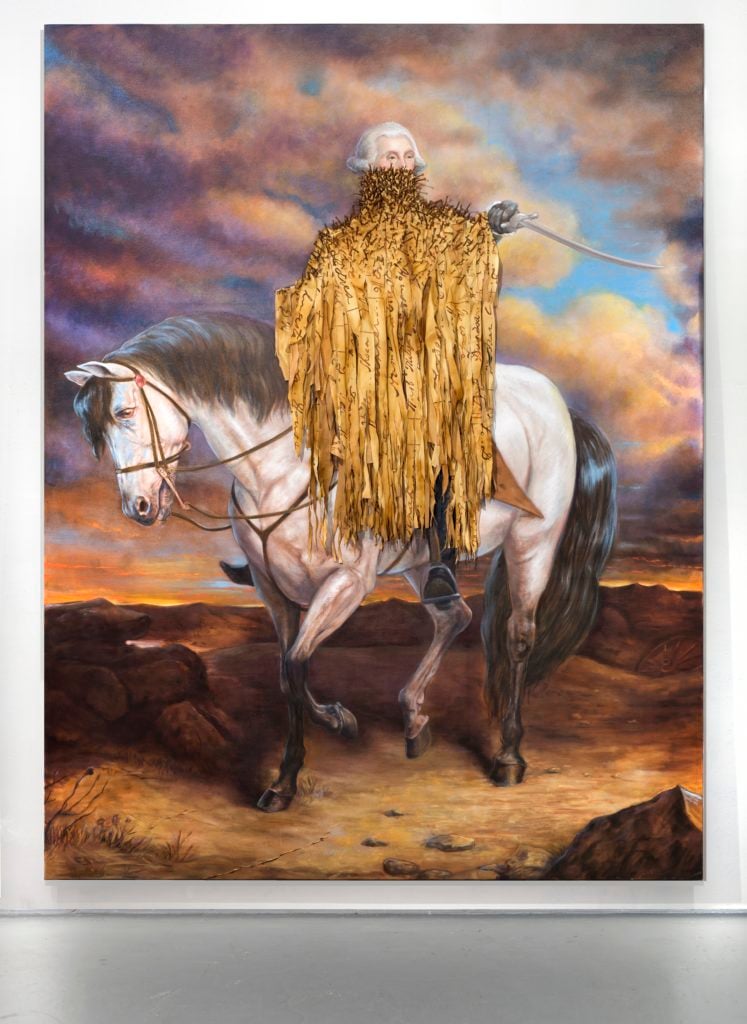
Titus Kaphar, Shadows of Liberty (2016). Courtesy of the artist and Jack Shainman Gallery.
CAPITAL VS. EQUITY
By definition, markets are systems that privilege wealth. People with money get what they want because they can either meet a price that others can’t or because their reputations make them more desirable customers than less-known individuals with the same budgets.
Now, it’s true that class is bound up with race, gender, and other human attributes in a mind-mincing wire mesh of complications. Just look at the data showing that, to quote the New York Times, “Black boys raised at the top… are more likely to become poor than to stay wealthy in their own households,” while their white counterparts who “grow up rich are likely to remain that way.” Just as damning are the statistics confirming that the Great Shutdown has done disproportionate and egregious harm to women in the U.S. labor force. Myriad other studies of inequity are about as easy to find as one of your own eyebrows.
Yet a market is only designed to care about the thickness of a customer’s bankroll, not why that bankroll is as thick or thin as it is. The system is logical, but not equitable. At least, not in the larger social sense that we mean when we talk about equity, participation, and especially decolonization.
So just as Atlas Obscura cannot decolonize travel writing without obliterating the publication, the only way to truly decolonize the art trade would be to strap dynamite to the pillars of the market economy. Reason being that markets are structures that can only ever privilege the logic of capital—and, with it, the biases of wealth creation and maintenance embedded in an unjust society.
Can the art market become more equitable? No doubt. We are seeing some genuine efforts to bring about that outcome now, and they deserve support. The bad news is that those efforts will fall short of full decolonization unless or until systems much bigger than our niche industry (the labor market, the legal system, the tax code, and more) are radically revised to eliminate centuries of harm.
The good news, however, is that Atlas Obscura proves in the realm of travel media that meaningful evolutions can be implemented within individual organizations right now. Those in the art market should follow its itinerary in their own territory ASAP. Readers should also keep in mind the natural limits of the journey—and look elsewhere if they want to see the entire landscape remade from the ground up.
[The New York Times]
That’s all for this week. ‘Til next time, remember: The end of one road is only the start of another.
